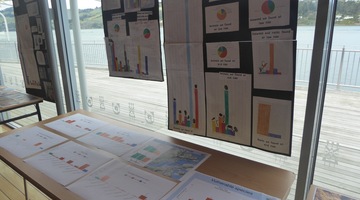

Observation is something we often do instinctively. Observation helps us decide whether it’s safe to cross the road and helps to determine if cupcakes are ready to come out of the oven ...
READ MORE

Electronic tagging of marine animals is common, but tagging marine invertebrates is very unusual! For example, in 1998, an estimated 11,800 marine animals were tagged electronically, and only 35 ...
READ MORE

Sometimes we assume that students will learn about the nature of science just by doing scientific investigations. This is no more valid than assuming a student will learn about photosynthesis by ...
READ MORE

Continually, there are right and wrong messages about the nature of science in our classroom teaching and in popular media. In this activity, students view two video clips that highlight how ...
READ MORE

In this activity, students look at SMS text language to gain a deeper understanding of communicating in science. By the end of this activity, students should be able to: write messages using SMS ...
READ MORE

In this activity, students determine the contents of a ‘mystery’ box by making observations but without opening it, and parallels are drawn between this activity and aspects of the nature of ...
READ MORE

This citizen science project wants your assistance to extract information from various climate scientific graphics to help combat misinformation and support scientific communication. Using this ...
READ MORE

When well managed, class discussion can help students examine, evaluate and share knowledge about a subject, providing opportunities for students to think critically and creatively, consider ...
READ MORE

Primary Science Week 2016 has a focus on soil. Don’t confuse dirt with soil – did you know there are more living things in a teaspoon of healthy soil than there are people alive on the Earth? Dig ...
READ MORE

Teaching science to primary school students is not simple. Teachers need to be able to take science concepts and present them in ways that enable students to learn. The two-part science planning ...
READ MORE
Tagging marine invertebrates is very unusual! Dr Miles Lamare, from the University of Otago, talks about why they decided to tag the New Zealand starfish and what they hoped to discover. Point of ...
READ MORE
Dr Miles Lamare, from the University of Otago, talks about the challenges of attaching electronic tags to starfish. Point of interest Starfish is the common name for a group of animals called sea ...
READ MORE
Dr Robert Hoare, of Landcare Research NZ Ltd, takes us on a moth-collecting expedition. Join Dr Hoare as he goes out at night to collect moths for scientific study.
READ MORE

Discover a range of scientific approaches – select a label for videos and more information to support your understanding.
READ MORE

Sea stars have many weird and wonderful adaptations including both sexual and asexual reproduction. Click on any of the labels in this interactive to view short video clips or images to learn ...
READ MORE

Sea stars have many weird and wonderful adaptations – including some unusual internal systems. Click on any of the labels in this interactive to view short video clips or images to learn more ...
READ MORE